A Brief Introduction to the OSR and Some Recommendations
Talking about some things I like in OSR
May 1, 2020
Tagged: OSR
I originally posted this as a thread on Antilibraries but wanted to duplicate it here for posterity
My day job (whatever that means in a time of Covid) is a game designer, and as such I’m always on the lookout for games of all shapes and sizes. I’ve recently fallen into a specific hole in this regard and, given its adjacency to Antilibraries-esuqe material, thought I’d share what I’ve found!
Background
So, I assume everyone reading this has heard of Dungeon and Dragons. Even if you haven’t played it, you probably understand it conceptually - people gather around a table (or video chat) and essentially engage in a shared storytelling experience shaped in part by a system of rules that govern how play happens. While D&D for a long time was considered the peak of nerddom, it has been going through something of a renaissance recently that has largely expanded its player base beyond the usual suspects, propelled in part by the release of their 5th edition ruleset a few years back.
The difference between the 4th edition and 5th edition of something can be trivial, but in this case the difference is staggering. 4th edition is D&D exactly as you may have conceptualized it (in part because it was active from 2007-2013, and as such defined the genre in recent history). It mostly looks like this:
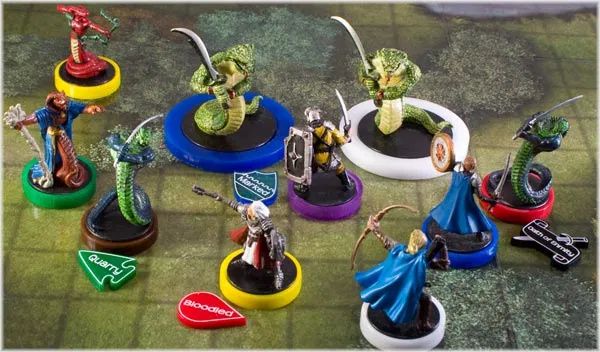
The game took place on a (required) gridded map, and played like an incredibly complex hybrid of the most complicated boardgame you ever played mixed with a wargame. For obvious reasons, the appeal here was relatively small, or at least, focused on trajectory of D&D editions where each edition was more complicated than the last.
5th edition D&D basically blew up this concept. A game of 5th edition is more likely to look like this:
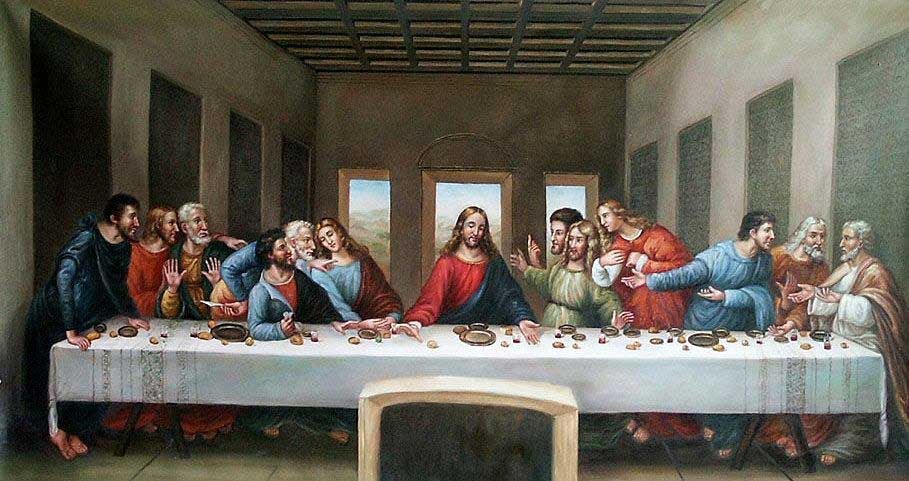
Or at least, more like just a gathering of people at a table with some dice and stat sheets. The game refocused the action of the game to not be on a gridded map splayed out in front of players, but instead to take place in “the theater of the mind”. The idea is that players, together, are telling a story, and can fill in the gaps themselves with help from the GM (game master) who paints a rough picture. There are still stats and bonuses and items and loot, but the cumulative effect is that more people who just want to hang out and tell stories with friends are now playing D&D (5th).
Beyond D&D
But! And this is what the post is actually about, D&D is not the only roleplaying game. This may be hard to conceive for someone on the outside, as D&D’s presence in both the cultural cannon and actual store shelves is massive, but roleplaying games are a vast genre of things, all who have their own approach to this idea of “shared storytelling”. And D&D (along with its publisher Wizards of the Coast) knows this and as such can basically “filter in” ideas from other spheres of roleplaying games to bring to the masses. Nowhere is this more apparent than in the shift between rules from 4th to 5th edition, which is (I believe) in part inspired by something else that was spinning up in that 2007-2013 time period, the OSR, or “Old School Renaissance/Revival”.
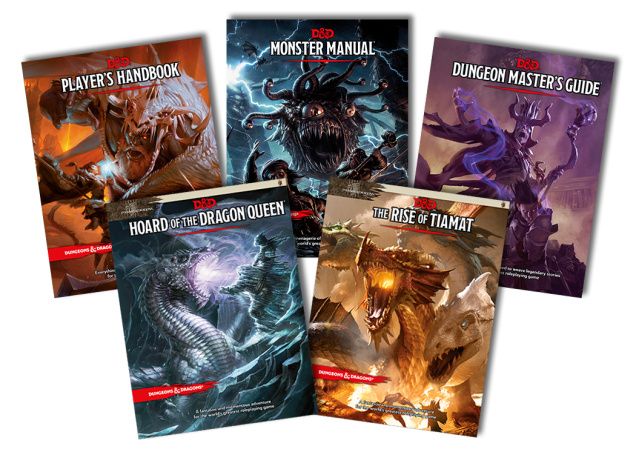
It’s easy to think every D&D release is well-received by its audience, but 4th edition, with its emphasis on grids and exact placement and combat, was controversial. 3rd edition had been more “theater of the mind”, and as such, 4th worked against this concept. A number of tabletop players, instead of moving on to 4th edition, kept playing third edition. Not only this, but they sort of doubled-down on the playstyle, lifting elements from 2nd edition D&D and even Advanced D&D (essentially D&D 1st Edition). Why?
Well Wizards of the Coast wasn’t any longer making 3rd edition game books, and the older material was easier adapted to the 3rd edition systems than trying to translate the grid-based combat of 4th edition back to 3rd edition. Additionally, at the time of the release of 3rd edition, Wizards created the OGL, or “Open Game License”, which allowed aspiring tabletop game designers “to modify, copy, and redistribute some of the content designed for [Wizards’] games, notably game mechanics”. This essentially meant you could create 3rd edition compatible material and not fear you were going to get sued by Wizards. This sort of agreement is what allows people even now to publish “5th Edition Compatible” material and sell it on store shelves.
The “OSR”
But! What people also started doing instead of just adapting old material was also making a lot of totally new material. This was also in the spirit of the rules of some of the first editions of D&D, that players were assumed to be imaginative enough to create their own campaigns and such and that D&D was merely a guide. While this started as a lot of things that smelled like 3rd edition material, this whole scene begun to spin out into its own movement - a movement/scene who cared more about the older styles of play, that is, play that wasn’t constricted to a grid, play that was more sandbox-y rather than linear (“railroad-y”), play that focused on character actions vs. a god-like DM (“rulings over rules”). This, and many other things, became tenants of what is known as the OSR, or “old school revival/renaissance” style of tabletop play. When 5th edition released, the OSR was in full swing, and didn’t somehow snap back to 5th. Instead, the OSR has fully become its own thing, and is a rich space to explore.
Watch this video for a good overview (and the channel is great for OSR stuff in general):
HOWEVER - and this video touches on this a bit, what the OSR actually is has been a point of contention. It roughly breaks down into a few categories:
- New campaign/source material directly compatible with older D&D systems (“retroclones). The biggest thing in this area is the Old School Essentials 1 series.
- Reconfiguring (“hacking”) of older systems to sort of “update” them. This is often a distillation of systems to make them easier to learn to play. This is also often done to piece apart D&D’s mechanics from its setting, so you can use the rules of D&D to play a game not set in a generic fantasy world. The Black Hack is a great example of this.
- Totally new systems “inspired” by the ideas of the OSR itself. This is where the fun really begins.
So personally, I never really played D&D growing up. I don’t have any nostalgia for 3rd/4th edition, so the idea of the first two categories aren’t especially compelling. My entry into the OSR was the third category - running into entirely new books/games that prioritized old-school style play but didn’t feel beholden to the old-school part of OSR. Some selections from here are Knave, Tunnel Goons, Maze Rats, Mothership.

I haven’t really stated this yet, but it should be emphasized here: the OSR community is a prolific group of independent writers and publishers. It’s crazy to explore this community (of which there is a lot and I’m barely scratching the surface) because the artifacts of the work by this community are actual physical books. I’m comparing this in my mind to musicians, videogame designers, etc., where the art is easily transferrable just over a computer. The community thrives off PDFs as well, but the fact you can actually buy a physical manifestation of an idea that started (and continues to live) digitally is just cool.
But there is more. Further into this subset of OSR is some truly groundbreaking stuff. “Games” that push at the idea of even being a tabletop game, but still hold onto signifiers of the form. “Games” that are just as proper fiction stories. These are books you can read just for the value of the book itself, even if you never properly “play” a game in the campaign (but you should try anyways). And this is where I personally think OSR shines. Also, strangely enough, I think this is where OSR is the most accessible to an outside audience. I see something similar in videogames, where the most experimental videogames are actually the ones most likely to pull in a new audience because they offer a counter example to otherwise hegemonic form of the media. So here’s some truly strange stuff that I hope you enjoy and don’t begrudge me from taking so long to get here.
A BRIEF TOUR OF SOME OF THE STUFF I LIKE IN THE OSR

Silent Titans
Buy direct from Swordfish Islands “Silent Titans combines the fervid, intensely vibrant, escher-like artwork of Dirk Detweiler Leichty and the strange dream-vision prose of Patrick Stuart on every page. Its dungeons are also heraldic glyphs, its monsters and characters sprawl across double-page spreads like the figures of an illuminated gospel from a fallen post-singularity world.”
Dirk and Patrick will be recurring characters in a lot of the following as well. Patrick is sort of a gonzo RPG writer, and Dirk (along with Scrap Princess and Skerples) are the (in what I can see) leading artists who illustrate written work of a similar form.
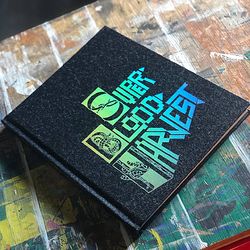
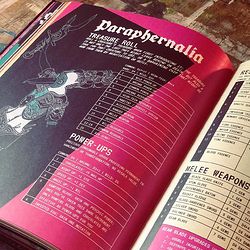
Super Blood Harvest
Buy direct from Swordfish Islands Dirk from Silent Titans’ compiled Zine series Super Blood Harvest into a single hardback book. He writes and illustrates this. Expect more great Silent Titans-esque stuff
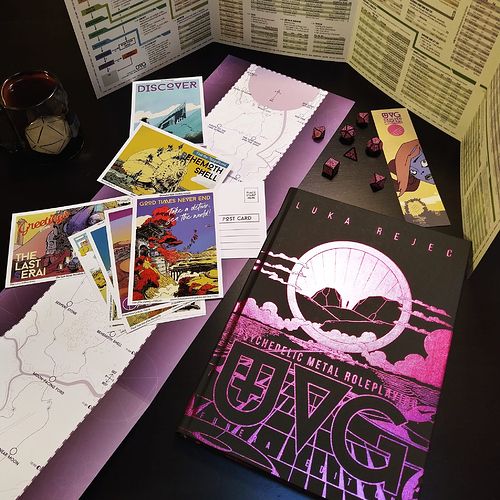
Ultraviolet Grasslands
Buy from Exalted Funeral “The Ultraviolet Grasslands and the Black City is our biggest and trippiest 2019 tabletop role-playing game book. Half setting, half adventure, and half epic trip; inspired by psychedelic heavy metal, the Dying Earth genre, and classic Oregon Trail games. It leads a group of ‘heroes’ into the depths of a vast and mythic steppe filled with the detritus of time and space and fuzzy riffs.”
Written by prolific RPG blogger Luka Rejec, who also created the amazing Witchburner, Longwinter, and many others.
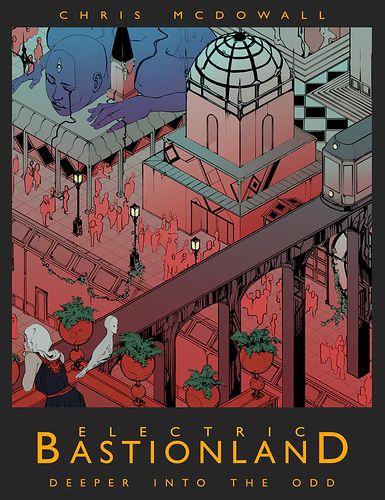
Electric Bastionland
Buy from DriveThruRPG “Electric Bastionland is a roleplaying game written by Chris McDowall, author of the critically-acclaimed Into The Odd. It uses and expands upon the systems developed in Into The Odd, resulting in a rules-set that’s easy to run as a Referee and even easier to play. It’s not a sourcebook or an expansion - it’s a standalone journey into an unknowable place.
The majority of the book is devoted to detailing 100 Failed Careers; by cross-referencing your character’s abilities that are randomly generated during creation, you can see precisely what job they used to have before bad luck, incompetence and maliciousness forced them out of it and into the dangerous profession of treasure-hunting. Each comes loaded with hooks and sketches out information on Bastion and the surrounding areas, giving the players and GM room to tell their own stories within the strange and fascinating world.”
Chris also runs a great blog, with lots of advice for running campaigns, world building, etc.
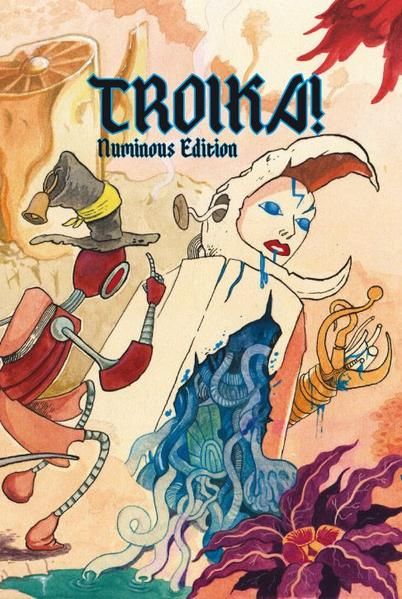
Troika
Buy directly from Melsonian Arts Council ” Troika! is a complete science-fantasy RPG full of critically acclaimed writing, built-in wonder and room for everyone at the table to go wild!”
Troika was my entry into the OSR and what made me really feel in love with it. It’s slightly less art-y than other books in the list (and as such maybe a bit easier to actually play), but where it shines (outside of its core system), is the pure imagination of writer Daniel Sell as expressed through the 66 character “backgrounds” (illustrated by Dirk Detweiler Leichty) that come in the book:

This system of backgrounds has proven popular enough to inspire a few dedicated Troika! background “game jams” as well:
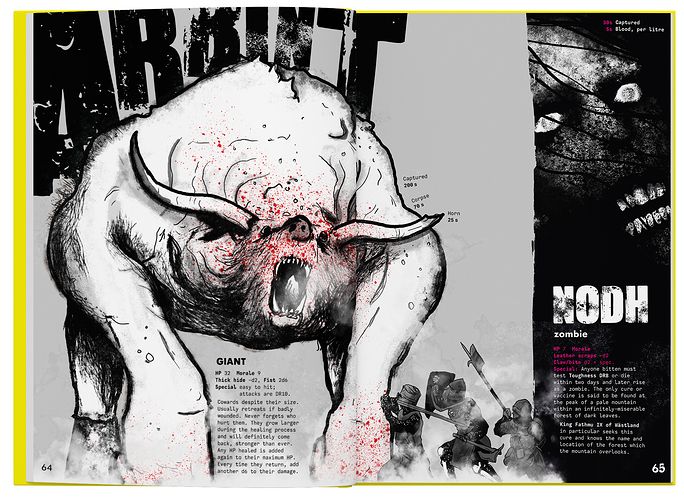
Mork Borg
Buy direct “MÖRK BORG is a pitch-black apocalyptic fantasy RPG about lost souls and fools seeking redemption, forgiveness or the last remaining riches in a bleak and dying world.”
This is a very art-punk-y book that feels like an adventure with every page. As you can tell from the image above, stats are more like suggestions for play rather than being the point of the game.
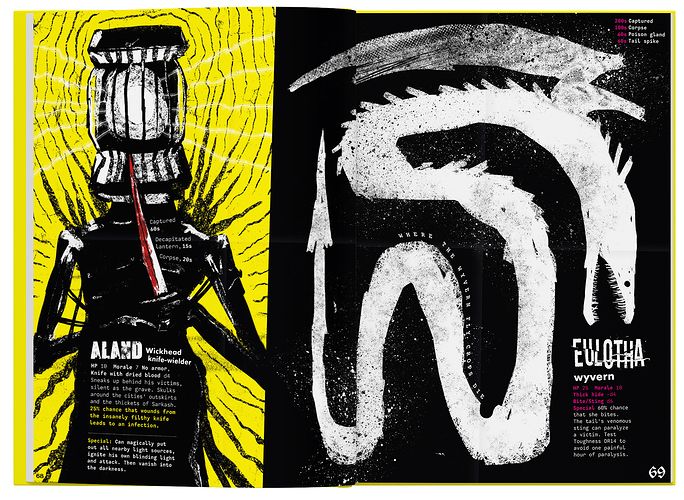
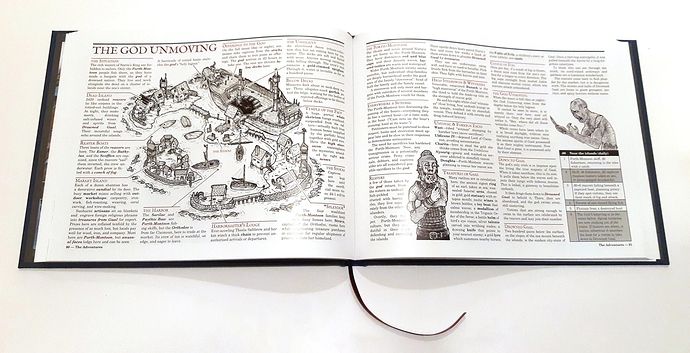
Trilemma Adventures
Buy direct “This book brings together the award-winning Trilemma Adventures : 48 one- and two-page adventure locations for fantasy role-playing games. Each location is written to be usable separately, perfect for one-shot sessions, side quests, or to help populate your home grown campaign setting.”
This is less gonzo than some of the above stuff, but I think it’s a good representation of the variety of things available in the OSR. This is just a book of settings for campaigns, laid out like a coffee table book. Whether you play in the maps or not, thumbing through them and imagining the adventures that could take place is the point.

The Gardens of Ynn
“The Gardens of Ynn is a point-crawl adventure set in an ever-shifting extradimensional garden. Each expodition generates its route as it explores, resulting in new vistas being unlocked with every visit.”
Emmy Allen’s work holds a special place in the OSR. Ynn, like Stygian Library (below), are sort procedurally generated dungeons. Instead of being fully authored dungeon crawl experiences, the dungeons morph and twist and fold in on themselves based on player action. It makes sense then too that the subject matter itself is equally trippy, and Ynn focuses on a extradimensional garden that won’t reveal all of its secrets to you on a single playthrough.
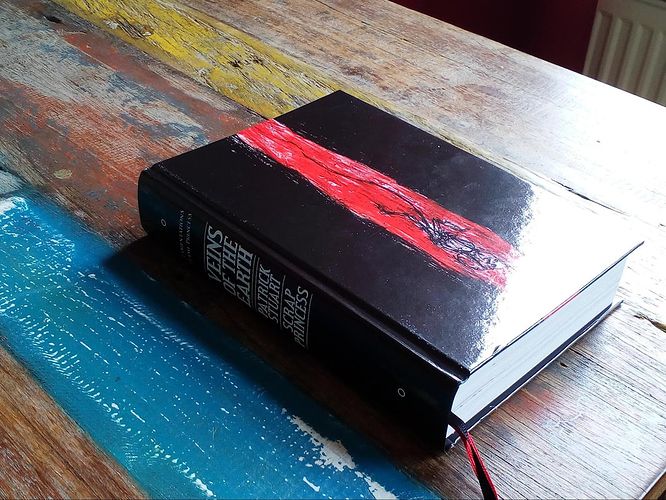
Veins of the Earth
“At the deepest point of the dungeon, behind the throne, beyond the rooms where the battles took place, after everything is done and the enemy dead, there is a crack. A black empty space where the wall joins the stone floor, a foot and a half high and three wide. A breeze comes out. You’d never notice it. You could lie on your belly and fit inside…”
This is sort of the Dante’s Inferno of OSR material. It’s a nearly 400 page tome about what lies inside of the cracks of the earth. It’s Patrick of Silent Titans and Scrap Princess, who together conjure up a book that, as you read it, feel like you’re also going slowly insane.
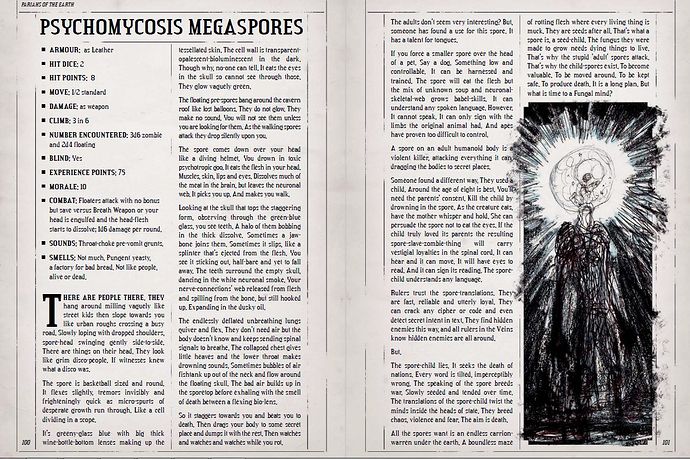
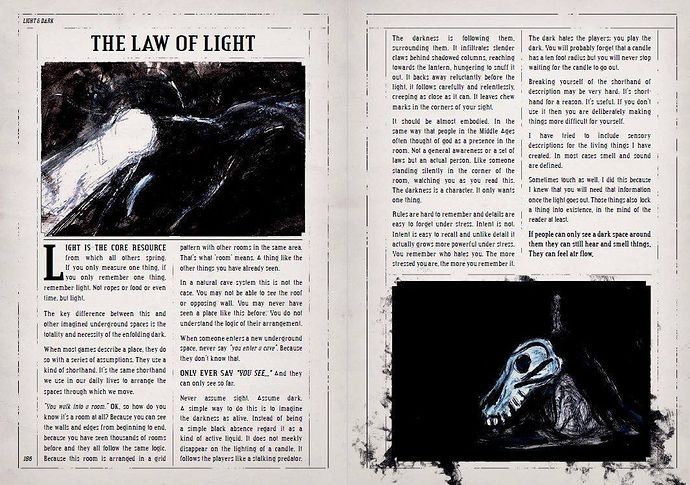

Genial Jack
Buy direct from Lost Pages “Genial Jack draws its influences from the fantasy of the 17th and 18th centuries — Gulliver’s Travels , the adventures of Baron Munchausen, The Blazing World , New Atlantis , salon-era fairy tales — and from New Weird urban fantasy like the Bas-Lag trilogy and K.J. Bishop’s The Etched City . Wheellocks, sailing ships, social satire, chimerical monsters, allegory, swordfights, manners, teeming cityscapes, metaphyics, oddball pirates, eccentric islanders, flotsam and jetsam.”
This is one that comes from the OSR blogosphere, which is vast and out of scope for this post.
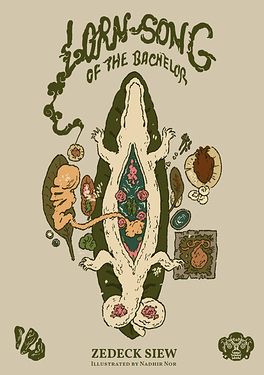
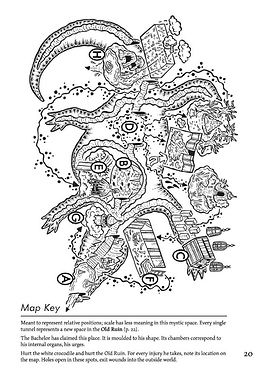
##Lorn Song of the Bachelor Buy from Exalted Funeral “Weeds trail the water. The sandbar just off the shore shifts. A reptile rumble, a splash. Now a gaping maw. A roar. Claws splintering wood. The boat capsizes. You are in the river, now.
He is the Bachelor: a pale crocodile, as long as five men lying end to end. He swallows hunters, families, trading skiffs. Prospectors fear to go out. Witches mutter. They say he causes landslips. They say he is a god, a curse — an old, old sin, staining the river. They say he has been killed, before.”
Zedeck Siew is one of the most interesting writers in the OSR scene right now. His books are pure strange. This one focuses on an island crawl with a giant alligator where the alligator (the “Bachelor”, “inspired by the crocodile stories of Southeast Asia — particularly Sarawak.”) is also physically/metaphorically/spiritually attached to the island it roams.
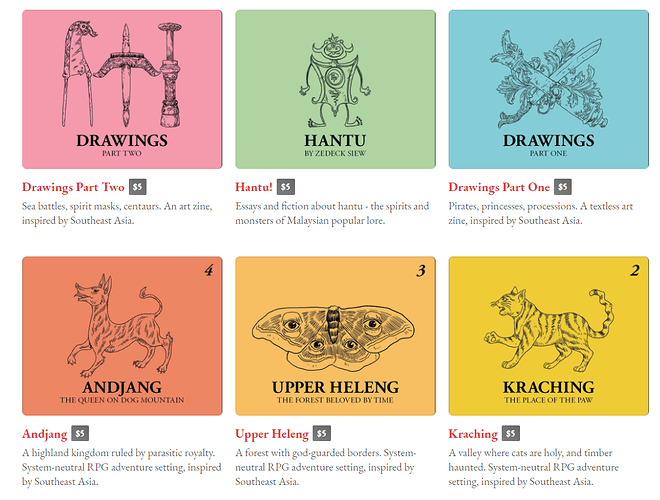
A Thousand Thousand Islands
“A THOUSAND THOUSAND ISLANDS is a series of zines, designed for use in fantasy adventure tabletop RPGs. Ongoing since 2017, this project draws from the overlapping material cultures, lived stories, and mythistories of that region of the world variously called Indochina, Suvarnabhumi, and the Nusantara — Southeast Asia.”
More Zedeck here, and really just flexing. These zines are rough descriptions of places both real and imagined, with rough/loose stat pages. They use the structure of a tabletop game to speak to deeper cultural topics in Southeast Asia, and inside that model explore cultural history. They are as much games as they are cultural autobiographies.
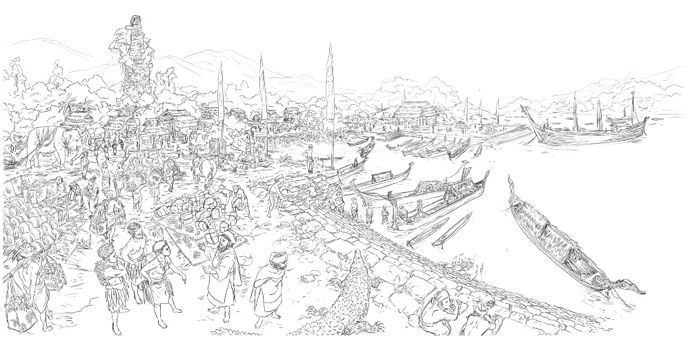
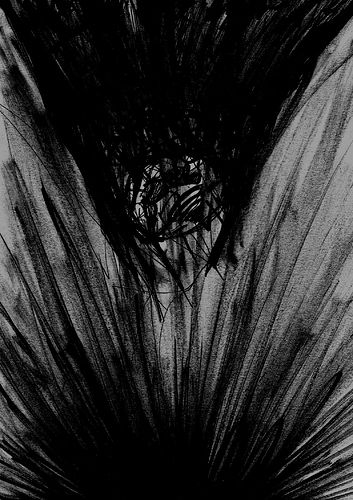
Deep Carbon Observatory
Recently kickstarted the remaster, buy when available direct
“The adventure takes players from a town devastated by an unexpected flood, through a drowned land where nature is turned upside down and desperate families cling to the roofs of their ruined homes, hiding from the monstrous products of a disordered world, through the strange tomb of an ancient race, to a profundal zone, hidden for millennia and now exposed, and finally to the Observatory itself, an eerie abandoned treasure palace, where they will encounter a pale and unexpected terror which will seek to claim their lives.”
More Patrick, more Scrap Princess, more weird (and Dirk also does the maps in this). Similar in spirit to Veins, but probably more properly “gameable”. Regardless, another psychadelic adventure the leads you to worlds, and planes of being, unknown.
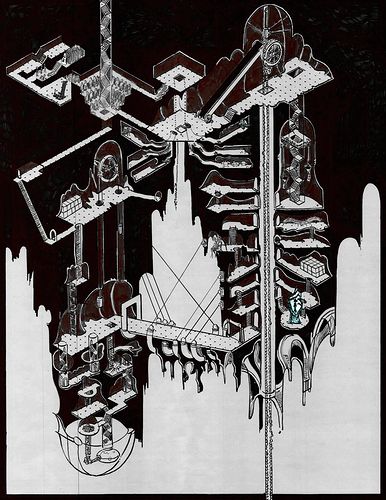
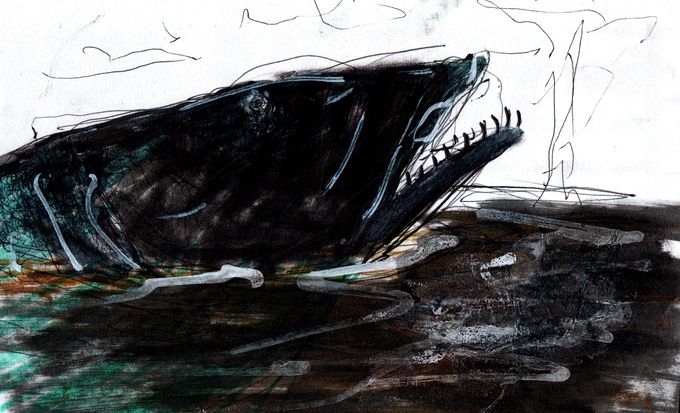

The Stygian Library
Buy from DriveThruRPG 1 “The Stygian Library is a creepily genteel dungeon set in an infinite extradimensional library. Each expodition generates its route as it explores, resulting in new locations being iscovered with every visit.”
Similar to the procedural systems of the aforementioned Gardens of Ynn, the Sygian Library uses a similar idea and applies it to a library. For any fan of Pagemaster (of which I would think Antilibraries has a few), this is for you.
Hope someone finds this useful! Thanks for reading!
Published on May 1, 2020.
Tagged: OSR